
Copernical Team
WashU scientists help recover gases from Moon rock time capsule
 St. Louis MO (SPX) Mar 08, 2022
Scientists from Washington University in St. Louis are helping to recover gases from a container of lunar soil that astronauts collected and sealed under vacuum on the surface of the Moon in 1972. The effort is part of NASA's Apollo Next Generation Sample Analysis (ANGSA) initiative.
Apollo 17 astronauts Harrison Schmitt and Eugene Cernan collected the samp
St. Louis MO (SPX) Mar 08, 2022
Scientists from Washington University in St. Louis are helping to recover gases from a container of lunar soil that astronauts collected and sealed under vacuum on the surface of the Moon in 1972. The effort is part of NASA's Apollo Next Generation Sample Analysis (ANGSA) initiative.
Apollo 17 astronauts Harrison Schmitt and Eugene Cernan collected the samp Hubble's Advanced Camera for Surveys celebrates 20 years of discovery
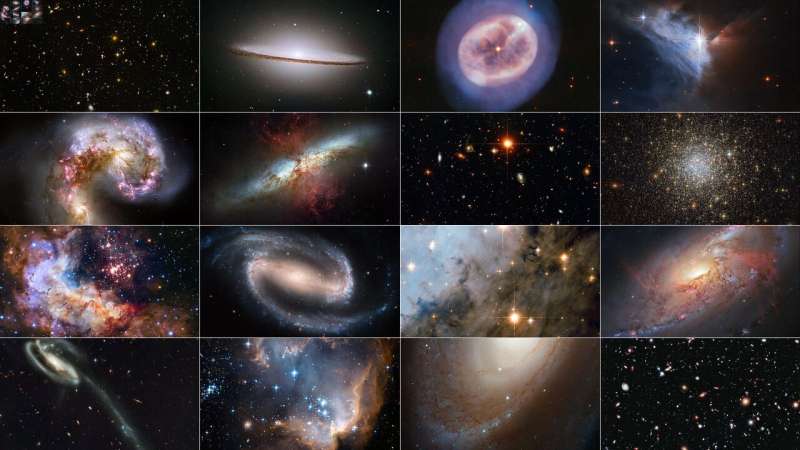
Today marks the 20th anniversary of the Advanced Camera for Surveys (ACS) aboard the NASA/ESA Hubble Space Telescope. On 7 March 2002 astronauts installed the ACS during Hubble Servicing Mission 3B, also known as STS-109. With its wide field of view, sharp image quality, and high sensitivity, the ACS delivers many of Hubble's most impressive images of deep space.
The ACS wavelength range extends from the ultraviolet, through the visible and out to the near-infrared. Its name, the Advanced Camera for Surveys, comes from its particular ability to map large areas of the sky in great detail. The ACS can also perform spectroscopy with a special optical tool called a grism.
Three subinstruments make up the ACS. The Wide Field Channel is a high-efficiency, wide-field, optical and near-infrared camera that is optimized to hunt for galaxies and galaxy clusters in the remote and ancient Universe, at a time when the cosmos was very young. The High Resolution Channel was designed to take extremely detailed (high resolution) pictures of the light from the centers of galaxies with massive black holes, though this is not currently operational, and the Solar Blind Channel blocks visible light to allow faint ultraviolet radiation to be discerned.
NASA's Psyche gets huge solar arrays for trip to metal-rich asteroid
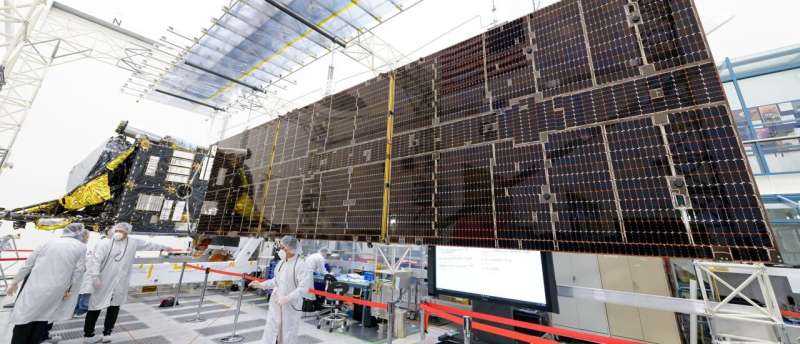
With its solar arrays installed, the spacecraft is close to its final configuration ahead of a planned August launch.
NASA's Psyche mission is almost ready for its moment in the Sun—a 1.5-billion-mile (2.4-billion-kilometer) solar-powered journey to a mysterious, metal-rich asteroid of the same name. Twin solar arrays have been attached to the spacecraft body, unfolded lengthwise, and then restowed.
Space station to host 'self-healing' quantum communications tech demo
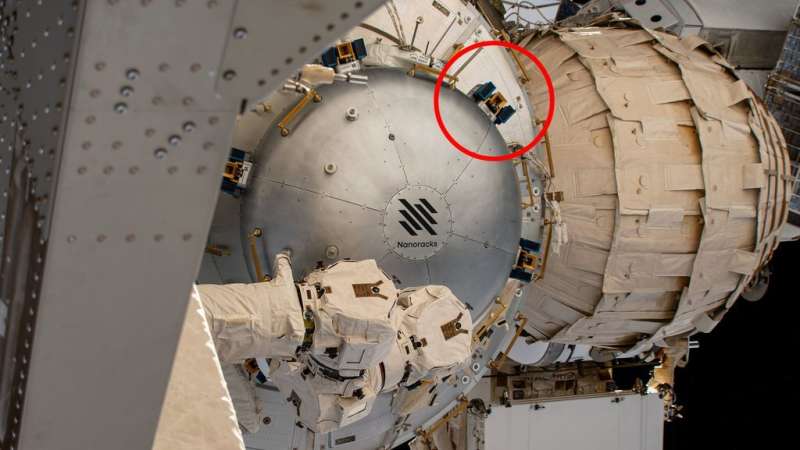
A tiny experiment launching to the International Space Station later this year could set the stage for a future global quantum network. Called the Space Entanglement and Annealing QUantum Experiment (or SEAQUE), the milk-carton-size technology demonstration will test two communications technologies in the harsh environment of space.
Quantum computers hold the promise of operating millions of times faster than conventional computers, and distributed quantum sensors may lead to new understandings of Earth and our place in the universe by measuring minute changes in gravity.
NASA rocket launches from Alaska in search of aurora answers
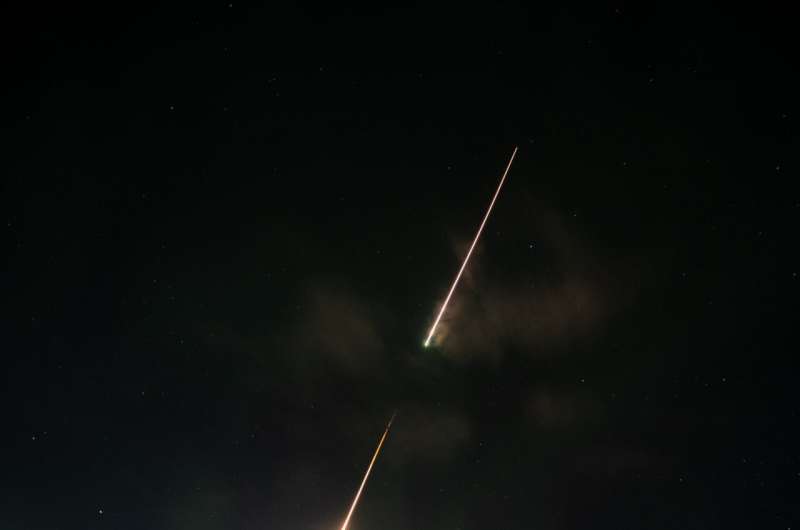
A NASA Black Brant IX sounding rocket soared high out of Poker Flat Research Range north of Fairbanks at 2:27 a.m. Saturday to learn more about pulsating aurora.
The Loss through Auroral Microburst Pulsations, or LAMP, experiment seeks to determine whether the pulsating aurora is connected to another phenomenon called microbursts, higher-energy electrons from the Earth's magnetosphere driven toward Earth in bursts that last about one-tenth of a second. That is faster than the pulsating aurora but similar to the flickering inside the pulsations.
A pulsating aurora looks patchy and occurs within minutes or sometimes hours after the conclusion of a discrete aurora, the familiar curtain-like type of aurora.
The launch had been repeatedly postponed since the Feb. 24 opening of the launch window because scientists needed the right combination of active aurora and good weather at a camera site in Venetie, which is located more than 130 miles north of the range.
Weather and aurora activity improved in recent days. Alexa Halford, space physics researcher at NASA's Goddard Space Flight Center and the experiment's lead investigator, detected pulsating aurora over Venetie early Saturday and determined that launch conditions were favorable.
Solar Orbiter crosses the Earth-Sun line as it heads for the Sun
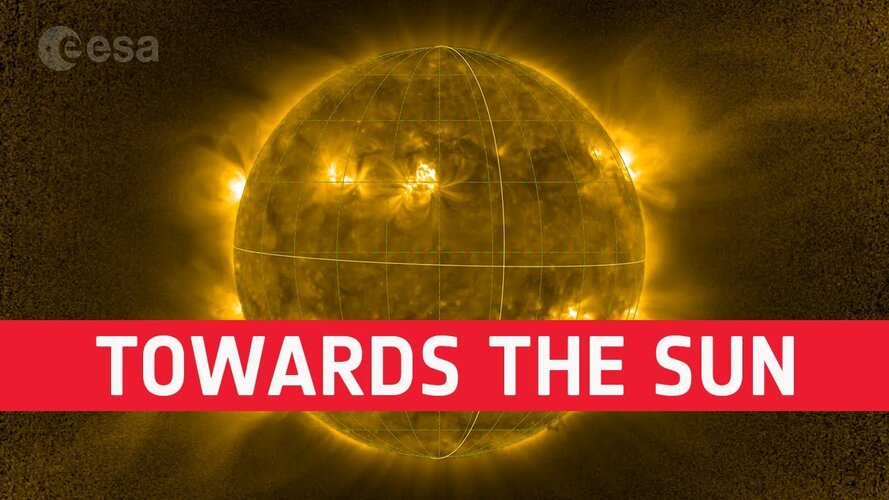
The ESA/NASA Solar Orbiter spacecraft is speeding towards its historic first close pass of the Sun. On 14 March, the spacecraft will pass the orbit of Mercury, the scorched inner planet of our Solar System, and on 26 March it will reach closest approach to the Sun.
How space engineering supports sustainable development

What do artificial hearts, crack-free wind turbines, and pig sewage treatments have in common? Perhaps surprisingly, they have all benefitted from technology developed for space.
Microscopic view on asteroid collisions could help us understand planet formation
 A new way of dating collisions between asteroids and planetary bodies throughout our Solar System's history could help scientists reconstruct how and when planets were born.
The research, which was led by the University of Cambridge, combined dating and microscopic analysis of the Chelyabinsk meteorite - which fell to Earth and hit Microscopic view on asteroid collisions could help us unde
A new way of dating collisions between asteroids and planetary bodies throughout our Solar System's history could help scientists reconstruct how and when planets were born.
The research, which was led by the University of Cambridge, combined dating and microscopic analysis of the Chelyabinsk meteorite - which fell to Earth and hit Microscopic view on asteroid collisions could help us unde Sidus Space teams with Aitech Systems to support LizzieSat constellation
 Sidus Space, Inc. (NASDAQ:SIDU), a Space-as-a-Service satellite company focused on commercial satellite design, manufacture, launch, and data collection is pleased to announce a strategic partnership with Aitech Systems to support LizzieSat Constellation.
Through this partnership, Aitech Systems is developing and delivering custom LizzieSat Command and Data Handling (C&DH) flight computers
Sidus Space, Inc. (NASDAQ:SIDU), a Space-as-a-Service satellite company focused on commercial satellite design, manufacture, launch, and data collection is pleased to announce a strategic partnership with Aitech Systems to support LizzieSat Constellation.
Through this partnership, Aitech Systems is developing and delivering custom LizzieSat Command and Data Handling (C&DH) flight computers Using NB-IoT connectivity to boost hybrid terrestrial-satellite networks
 Alif Semiconductor, a global provider of microcontrollers and fusion processors, and IoT satellite operator OQ Technology have signed a memorandum of understanding (MOU) to collaborate on a narrowband internet-of-things (NB-IoT) solution for hybrid terrestrial satellite networking. Alifs fingertip sized, highly integrated cellular enabled IoT devices will allow users to roam freely between mobil
Alif Semiconductor, a global provider of microcontrollers and fusion processors, and IoT satellite operator OQ Technology have signed a memorandum of understanding (MOU) to collaborate on a narrowband internet-of-things (NB-IoT) solution for hybrid terrestrial satellite networking. Alifs fingertip sized, highly integrated cellular enabled IoT devices will allow users to roam freely between mobil 